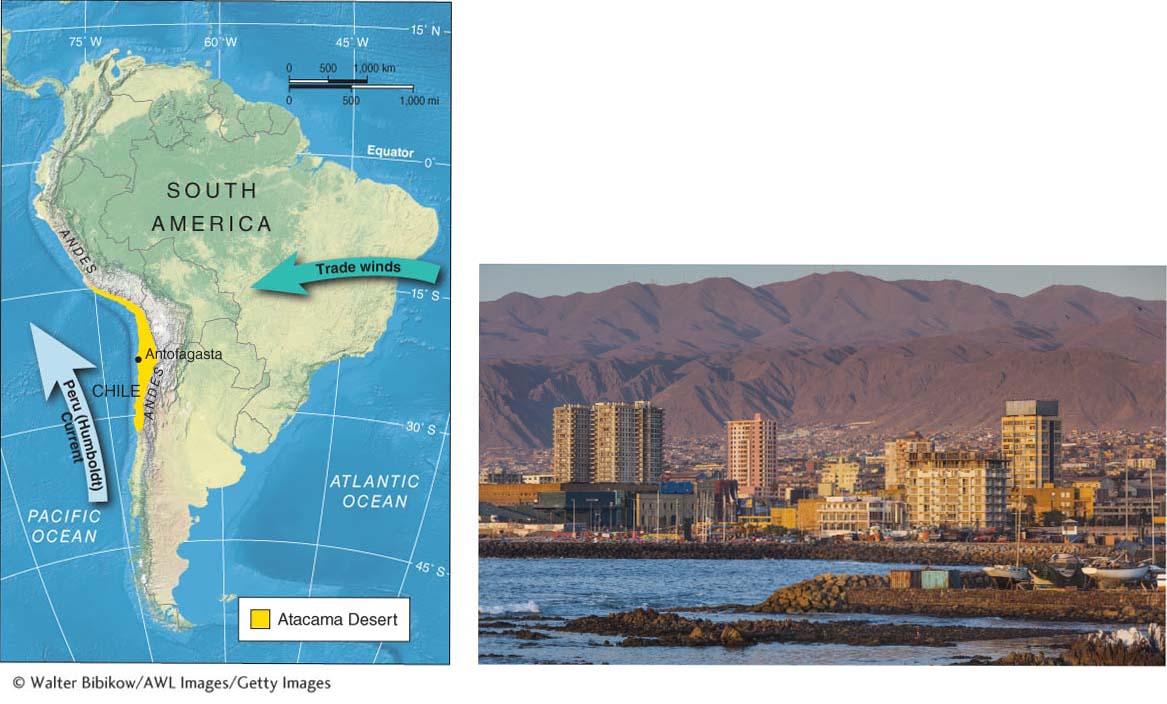WATER, WIND, AND TIME: Desert Landforms
18
578
579
Chapter Outline
18.1
Desert Landforms and Processes
18.2
Desert Landscapes
18.3
Geographic Perspectives: Shrinking Desert Lakes

LIVING PHYSICAL GEOGRAPHY
What are prehistoric petroglyphs and why were they made?
How do sand dunes sing?
What is a sand sea?
Why has the Aral Sea nearly disappeared?
580
THE BIG PICTURE
Desert landforms are shaped by flowing water and wind. Desert lakes and their ecosystems are changed when people divert water from them.
LEARNING GOALS
After reading this chapter, you will be able to:
18.1
Provide examples of desert landforms and discuss the processes that form them.
18.2
Explain how different desert landscapes develop.
18.3
Assess the effect of water diversions on desert lakes.
THE HUMAN SPHERE:
Flooding in the World’s Driest Place
ANTOFAGASTA, A PORT CITY IN NORTHERN CHILE with a population of about 360,000, is the fourth largest city in Chile. It is located in the world’s driest place, the Atacama Desert (Figure 18.1).

Figure 18.1
Antofagasta receives only 4 mm (0.16 in) of rain each year, on average. Like most desert regions we will explore in this chapter, however, the city is built on a surface created by flowing water. Paradoxically, the citizens of Antofagasta must protect it against flooding and debris flows. On rare occasions during strong El Niño years, flooding rains fill the normally dry canyons to the east of the city with raging torrents of water. The bare hills have little to no vegetation to anchor soils, and the canyons turn into slurries of mud that flow down onto the alluvial fans on which the city is built. Such flooding has happened seven times in the city’s history. The most recent flood event was in 1991, when more than 100 people died.
This chapter explores desert landforms and the processes that create them. We also turn our attention to different types of desert landscapes and see how each develops. Finally, we visit shrinking desert lakes and examine the anthropogenic factors that threaten them.
581